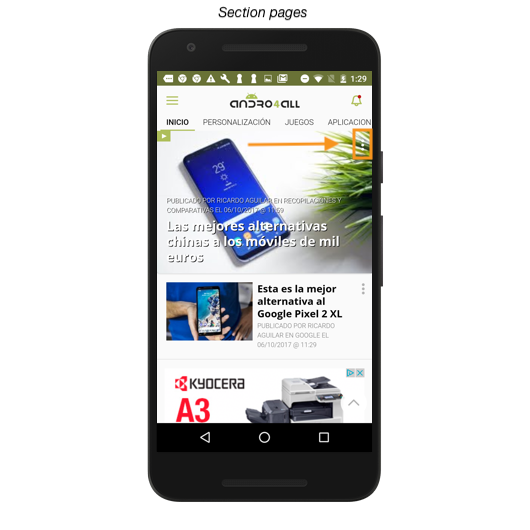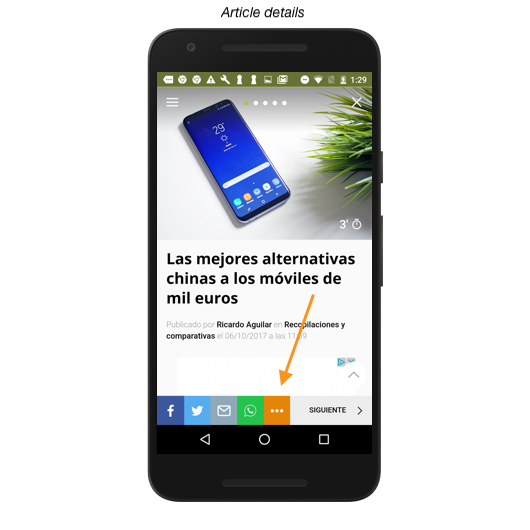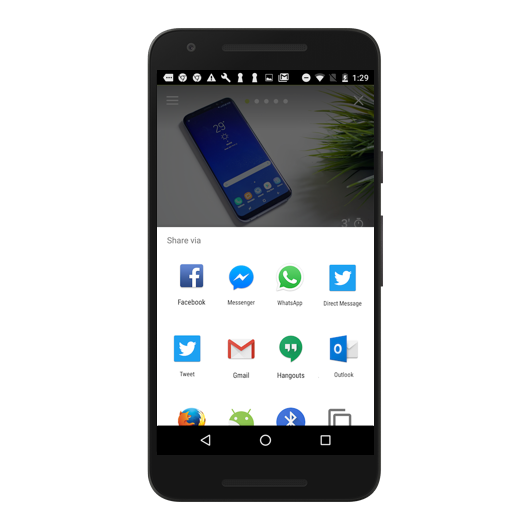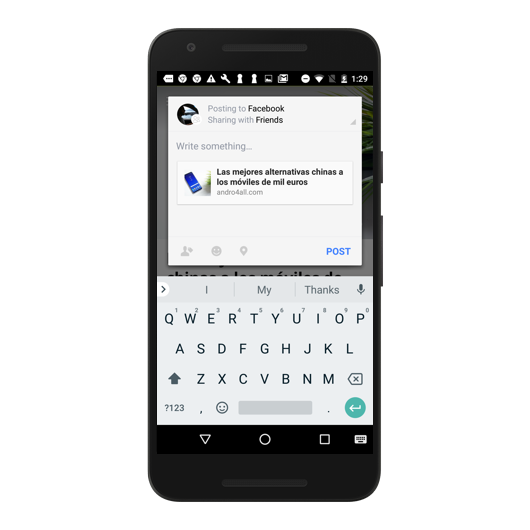Native Sharing in Android
In Marfeel PWAs (Progressive WebApp), Android users on Chrome use their native sharing options when they tap the social share feature. Invoking a user's native sharing capabilities on their operating system is a key strategy to promote and increase social sharing.
For users, it makes sharing more personalized because it displays only the native sharing options the user has downloaded, leveraging their preferred social channels. It also provides the user with more control over how content is shared by using the behavior of their installed native apps.
For publishers, this native sharing behavior boosts a publication's probability to be distributed through social channels, increasing their acquisition of traffic through those avenues. In fact, when testing this behavior, Google found that users shared 20% more when this behavior was enabled compared to when it wasn't.
Usage
- When a user taps the social sharing option in the article details or section page of a Marfeel PWA, the user's native sharing UI is displayed.

In the article details, the native sharing dialogue is invoked when the "more" icon is tapped.
- The sharing options that appear are the social network apps the user has installed on their mobile device.

- When a user chooses to share an article, image, or text, they share it through the native app they select.

Technical details
This native sharing behavior on Marfeel PWAs is made possible through Marfeel's integration of Chrome's Web Share API.
The Web Share API resolves which apps the user has installed on their device that support sharing and displays those when the sharing feature is triggered.
Requirements
For users to be able to enjoy this behavior:
- They must use an Android device
- Be running the Chrome mobile browser version 61 or greater
- The publisher must be serving content over HTTPS.
For information regarding Android native sharing in AMP pages, see this article.